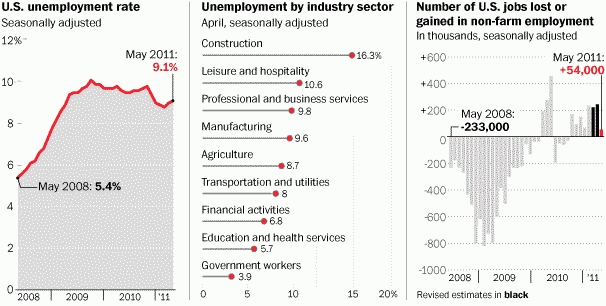During the last decade, the norm for bankers in Europe and America has been fraud. The main vehicle was the creating and selling of mortgage-backed synthetic securities based on computer models that were provably fraudulent, paying off ratings agencies to give them AAA ratings, and selling them to investors, collecting fat fees.
 |
| Ferdinand Pecora, cover of Time Magazine, June 12, 1933 |
In the giddy middle of the last decade, when there was plenty of money sloshing around thanks to the massive credit bubble, anything was OK. Everybody was screwing investors, but who cares? They could just borrow more money. Regulators and prosecutors didn’t care, since they were paying themselves fat salaries anyway.
But now that the credit bubble has burst, and there is less money in the world every day, it’s time to pay the piper, as the saying goes. People are still screwing one another, but now it’s a lot more vicious, as people scramble with one another to get hold of the remaining pools of money. Once again, it’s the bankers who are in the lead, charging 30% interest rates and using the money to pay themselves million dollar bonuses.
The desire for real vengeance is growing. This is a generational change. The Boomers and Gen-Xers who formerly trusted everyone now trust no one. The ones who were screwed now want to screw others. This is the first time that generational change of this type has occurred since the 1930s.
So, on Thursday, Manhattan (New York) District Attorney Cyrus Vance subpoenaed Goldman Sachs, demanding documents relating to the investment bank’s activities leading up to the financial crisis, according to the AP.
It’s not known whether the demands are for a civil or criminal action, but it’s assumed that the demand is related to civil charges of fraud brought by the SEC a year ago for doing the following:
- An investor asked Goldman Sachs to put together a portfolio of subprime residential mortgage backed CDOs that the investor could purchase as an investment.
- The investor asked Goldman Sachs to have a neutral third-party select the CDOs that were to go into the portfolio.
- Goldman Sachs instead went to a manager (John Paulson) of a hedge fund that was in the business of shorting these CDOs, and who stood to benefit if the portfolio collapsed.
- Paulson (according to the allegations) selected the weakest CDOs for the portfolio, because he wanted them to collapse so that he could make money.
- Goldman Sachs told the investor that a neutral third party had selected the CDOs for the portfolio; Goldman Sachs did not tell the investor of Paulson’s involvement. (This is the specific fraud that was alleged. Paulson was not involved in this step, so Paulson was not charged.)
- The particular Goldman Sachs executive who set up the deal was Fabrice Tourre. The SEC charged Tourre individually with fraud, along with Goldman Sachs.
- When the CDOs collapsed, the investor lost a billion dollars, and Paulson made a billion dollars.
It’s now four years later. The U.S. Justice Department has refused to prosecute Goldman Sachs for this deal.
You can guess why.
What’s interesting about this situation is that the Manhattan District Attorney is pursuing the case. He won’t be bound by the political considerations of the U.S. Justice Department.
There are three possible criminal charges that can be brought against Goldman Sachs, according to Fox Business News:
- Securities fraud for not disclosing to clients that Goldman was shorting securities the firm was also touting.
- Illegal market manipulation in an effort to artificially depress the prices of securities Goldman wanted to buy.
- Obstruction charges against Goldman CEO Lloyd Blankfein for possibly lying to Congress during hearings of the Senate Subcommittee on Investigations, chaired by Democrat Carl Levin in April 2010.
It was less than a month ago, that billionaire Raj Rajaratnam was convicted by a jury of insider trading. (See “12-May-11 News — Raj Rajaratnam conviction raises hopes of Pecora Commission revival.”)
Let us hope that we’re going to see an increasing number of these criminal charges and convictions. If history is going to repeat the 1930s financial crisis, then let’s hope history repeats the 1930s in a different way as well, by sending these bankers who committed fraud to jail.
Greece to unveil new austerity measures
 |
Update: Economists baffled by Friday’s jobs reports
 |
| May Unemployment Report (WaPost) |
Economists were literally stammering in confusion on TV on Friday morning in reaction to the Labor Dept.’s devastatingly bad jobs report for May. This is MUCH, much worse than even pessimistic mainstream economists predicted, and it comes after a week of equally bad housing and manufacturing data. One anchor asked the economist why the economy was “hitting a brick wall,” and she had no idea.
As I’ve said many times, mainstream economists did not predict and can’t explain the tech bubble of the 1990s, the global real estate and credit bubbles of the 2000s, the financial crisis that began in 2007, or where we are today, and they don’t have the VAGUEST idea where we’ll be next year.
This is a generational issue. Economists are using macroeconomic models from the 1970s and 1980s, when the Great Depression generations were still in charge. You’d have to be a complete moron to use those models today, but that’s what mainstream economists do, and that’s why they’re wrong every time, and why they’re completely baffled every time. It’s really remarkable to watch this going on.
The only macroeconomic models that have any hope of being correct would have to be based on 1930s data, because that’s the generational era we’ve returned to. We are still headed for a full-scale worldwide stock market panic and crash, below Dow 3000. This could happen next week, next month, or next year, but it’s coming with certainty. And if the economy continues to “hit a brick wall,” then it may happen soon. Washington Post
Big Peace

